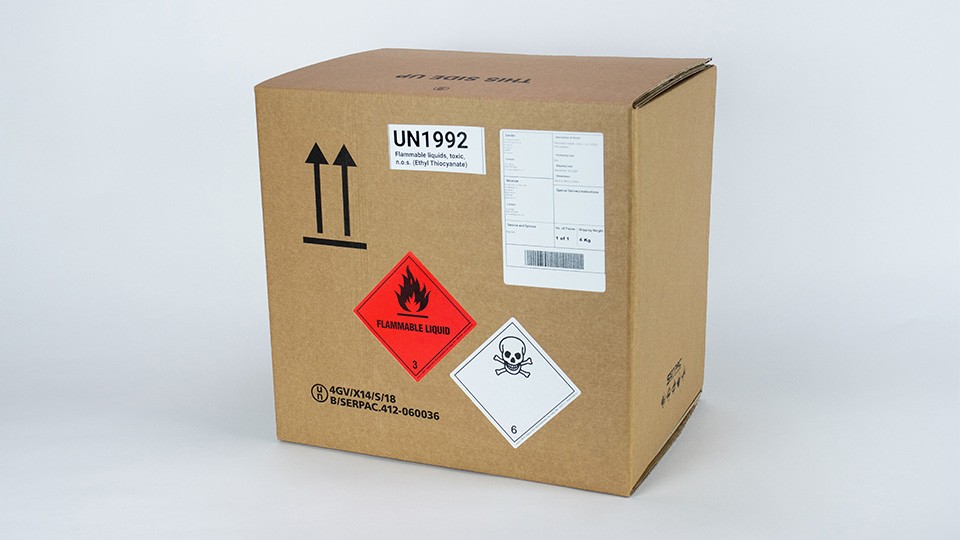When it comes to shipping dangerous goods across international borders, one of the most critical considerations is ensuring that your packaging meets the necessary safety standards.
These regulations are not just about compliance. They are designed to protect people, property, and the environment from the risks associated with transporting hazardous materials. But who exactly is responsible for setting and enforcing these standards?
1. The Role of the United Nations (UN)
At the heart of international dangerous goods regulations is the United Nations. The UN develops the Model Regulations on the Transport of Dangerous Goods, commonly known as the “Orange Book.”
These regulations provide a globally harmonised system for the safe transport of hazardous materials, including the standards for dangerous goods boxes.
Why It Matters:
- Global Standardisation:The UN Model Regulations serve as the foundation for many national and international laws, ensuring consistency across borders.
- Certification:Packaging like UN 4G boxes must be tested and certified according to these regulations, which helps guarantee that they can withstand the stresses of transport without failing.
2. International Maritime Organization (IMO)
For shipments that travel by sea, the International Maritime Organization (IMO) is the governing authority. The IMO’s International Maritime Dangerous Goods (IMDG) Code is the key regulatory framework for maritime transport.
Why It Matters:
- Maritime Safety:The IMDG Code is designed to prevent accidents at sea, which could have catastrophic consequences, especially with hazardous materials on board.
- Compliance:If you’re shipping dangerous goods by sea, your packaging must comply with the IMDG Code, which is based on the UN Model Regulations but tailored for maritime transport.
3. International Civil Aviation Organization (ICAO)
When dangerous goods are shipped by air, the International Civil Aviation Organization (ICAO) takes the lead in setting the standards. The ICAO Technical Instructions for the Safe Transport of Dangerous Goods by Air outline the requirements for packaging, labelling, and handling hazardous materials.
Why It Matters:
- Aviation Safety:Air transport involves unique risks, such as changes in pressure and temperature, making strict packaging standards essential.
- Universal Adoption:ICAO’s standards are adopted by virtually all countries, ensuring that dangerous goods can be safely transported by air worldwide.
4. International Air Transport Association (IATA)
While ICAO sets the regulations, the International Air Transport Association (IATA) ensures that these regulations are applied consistently across the aviation industry. IATA’s Dangerous Goods Regulations (DGR) are widely regarded as the industry standard.
Why It Matters:
- Industry Consistency:IATA’s DGR helps airlines, freight forwarders, and shippers adhere to the ICAO Technical Instructions, promoting safety and compliance.
- Training:IATA also provides extensive training resources, ensuring that those involved in shipping dangerous goods by air are knowledgeable and prepared.
5. Department of Transportation (DOT) in the United States
In the U.S., the Department of Transportation (DOT) is responsible for regulating the transportation of dangerous goods through its Pipeline and Hazardous Materials Safety Administration (PHMSA). Although the DOT’s regulations apply primarily to domestic transport, they are closely aligned with international standards.
Why It Matters:
- National Compliance:If you’re shipping dangerous goods within or from the United States, you must adhere to DOT regulations, which incorporate elements of the UN Model Regulations.
- Alignment with International Rules:The DOT ensures that U.S. regulations are consistent with international standards, facilitating smoother cross-border shipments.
6. European Agreement Concerning the International Carriage of Dangerous Goods by Road (ADR)
For road transport within Europe, the ADR sets the standards. It is a treaty under the United Nations Economic Commission for Europe (UNECE) that governs the safe transport of dangerous goods by road.
Why It Matters:
- Road Safety:The ADR focuses on preventing accidents and incidents on the road, which could endanger both people and the environment.
- European Compliance:If you’re transporting dangerous goods by road within Europe, compliance with the ADR is mandatory, ensuring that your packaging meets the required standards.
Conclusion
The regulation of dangerous goods packaging, particularly for international shipping, is a complex but well-coordinated effort involving multiple international organisations. From the UN’s overarching regulations to the specialised rules of the IMO, ICAO, IATA, DOT, and ADR, these standards ensure that dangerous goods are transported safely and securely across the globe.
For businesses involved in shipping hazardous materials, staying informed and compliant with these regulations is crucial. Not only does it protect your business from legal penalties, but it also ensures the safety of everyone involved in the transportation process. When in doubt, consult the relevant regulations or seek advice from a packaging expert to ensure that your dangerous goods are packaged correctly for international shipping.


